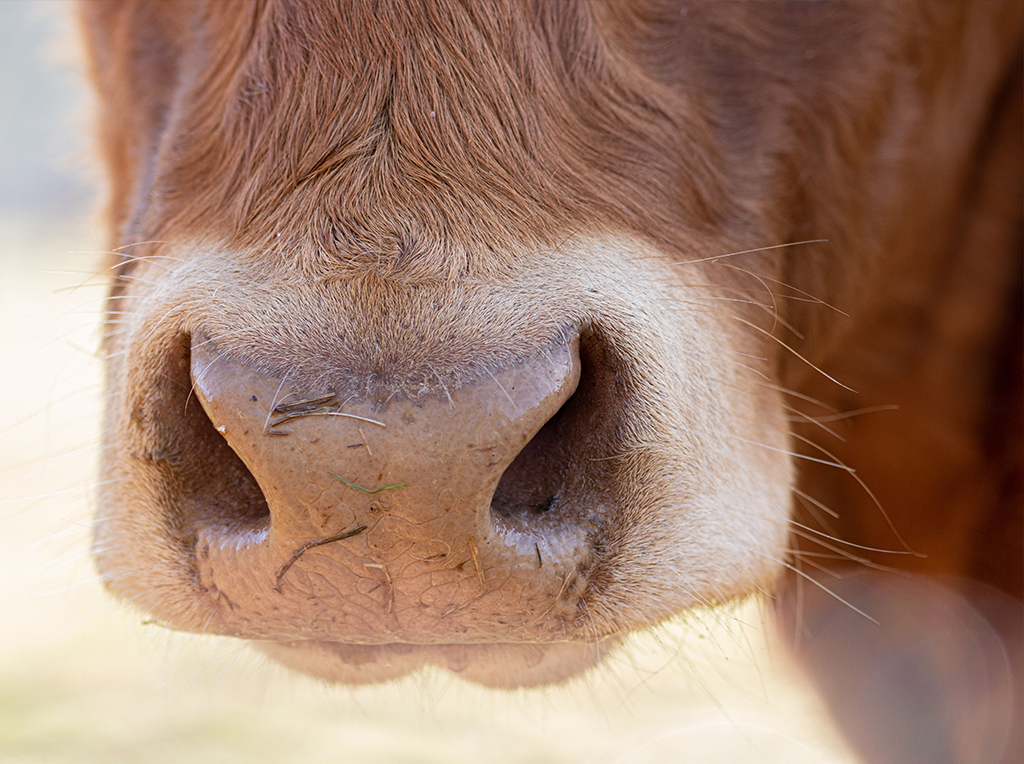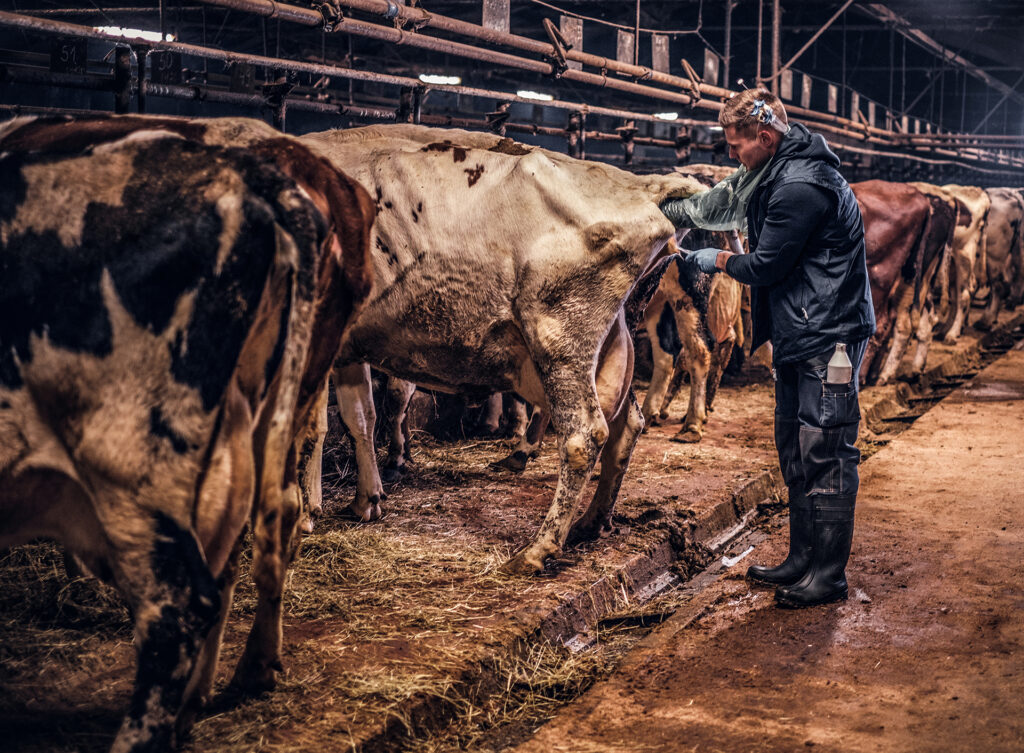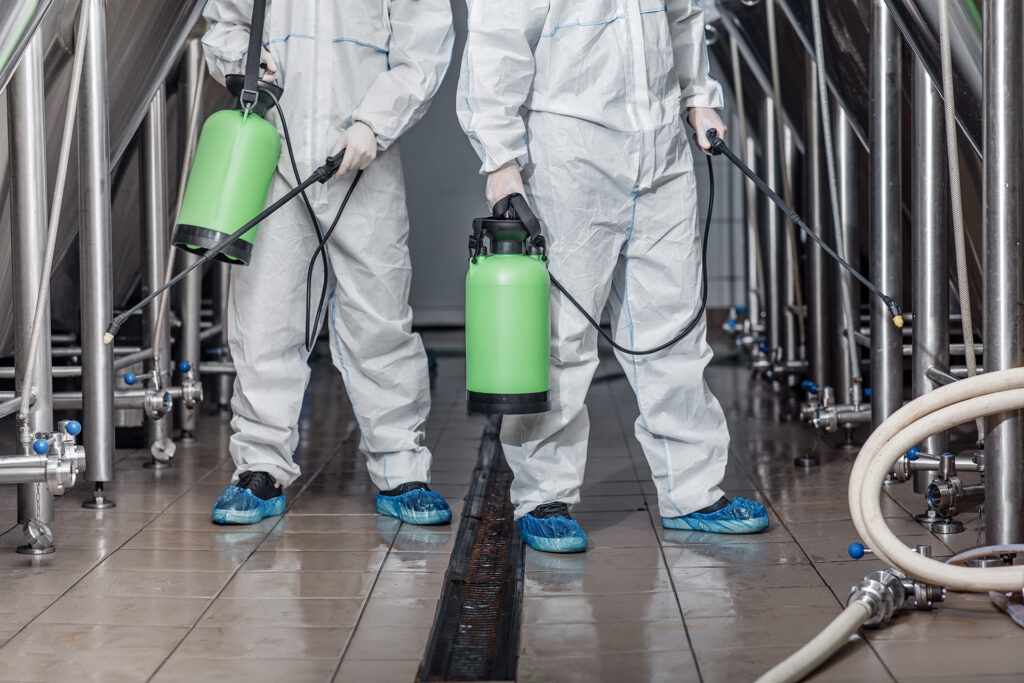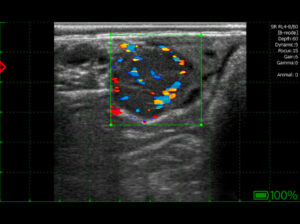Foot-and-Mouth Disease – A Serious Threat to Livestock

Foot-and-mouth disease (Aphthae epizooticae) is a highly contagious viral illness that affects cloven-hoofed animals such as cattle, pigs, sheep, and goats. Caused by a virus from the Picornaviridae family, the disease poses a major threat to animal health and has severe economic and epidemiological consequences. Outbreaks require immediate isolation of infected animals and the enforcement of strict control measures.

Non-enveloped, spherical, about 30 nm in diameter, pseudo T=3 icosahedral capsid surrounding the naked RNA genome. The capsid consists of a densely-packed icosahedral arrangement of 60 protomers, each consisting of 4 polypeptides, VP1, VP2, VP3 and VP4. VP4 is located on the internal side of the capsid. Source.
Sources and Modes of Transmission
Infected animals shed the virus in large quantities, especially through:
• fluid and tissue from blisters,
• saliva, urine, feces, semen, and birthing fluids,
• exhaled air – due to the virus’s high infectivity, airborne transmission via aerosol particles is a significant risk.
Additional sources of infection include:
• contaminated feed or water,
• direct contact with infected animals or contaminated animal products (e.g., meat, milk),
• equipment, vehicles, and even clothing worn by people who have been in contact with the virus.
Despite popular myths, insects do not play a meaningful role in spreading the disease.

Hygiene in the barn is always the basis of biosecurity.
Environmental Stability of the Virus
The virus lacks a lipid envelope, making it vulnerable to acidic and alkaline disinfectants but resistant to organic solvents like alcohol. Effective disinfectants include:
• 2% sodium hydroxide (NaOH),
• 4% sodium carbonate (Na₂CO₃),
• 2% acetic acid (CH₃COOH).
However, iodophors, phenol, and quaternary ammonium compounds are ineffective against it.
The virus is relatively resilient under certain environmental conditions, depending on pH, temperature, and strain. It can survive for extended periods at low temperatures (as low as 4°C) and neutral pH. In meat products that are rapidly chilled or frozen, the virus may persist for weeks or even months—especially in tissues like lymph nodes and bone marrow. On the other hand, it is destroyed after 30 minutes at 56°C.
The virus is quickly inactivated at pH levels below 5.0 or above 11.0, which is why strongly acidic or alkaline disinfectants are most effective.

If infection does occur, it is important to disinfect.
Economic Impact and Control Measures
Although foot-and-mouth disease does not pose a threat to humans, it can cause devastating losses to the livestock industry. Upon suspicion of an outbreak, it is crucial to report it immediately to the local District Veterinary Inspectorate. Notification can also be made to local authorities such as the village head, mayor, or city president.
Strict sanitary protocols are implemented on affected farms, including quarantine, a ban on animal movement, and complete depopulation of infected herds. Rapid detection, thorough disinfection, and close coordination with veterinary authorities are essential to controlling the spread.
Preventive efforts focus on biosecurity: minimizing animal contact, disinfecting vehicles and equipment, and ensuring veterinary oversight of the movement of animals and animal products.



